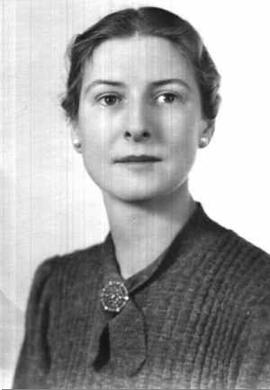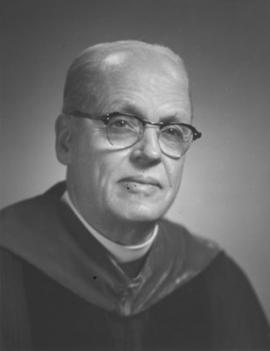Kathleen Jean Munn (1887-1974) was a modernist Canadian painter active in Toronto between the World Wars. She was the youngest of six children born to a Toronto jeweler who died when she was four (of an infection caused by the impact from a champagne cork) leaving her mother to manage the family business. Her talent for drawing was encouraged by her maternal grandmother, an accomplished amateur painter, and she was sent to study at the Westbourne School with F. McGillivray Knowles from 1904 to 1907. Knowles encouraged personal expression and an understanding of the principles of art and Munn thrived in this environment. In 1909 she began to exhibit Barbizon inspired landscapes at the OSA, RCA and CNE exhibitions, moving through periods influenced by Whistler, Corot, Puvis de Chavannes and the post-impressionists. About 1912 Munn first traveled to New York to study at the Art Student’s League and in 1914 she was awarded first prize at the Summer School in Woodstock NY. In 1915-16 she began a series of landscapes in which she showed a mastery of modernist techniques. Her association with the Art Student’s League, whose teachers were early proponents of modernism, was an important influence. Her notebooks show that she was reading extensively and broadly in the areas of literature, philosophy and aesthetics. She studied Jay Hambridge’s mathematical principles, the concept of ‘dynamic symmetry’ and Denman Ross’s colour theory. She seems to have been drawn to writers who proposed an underlying system of order and logic as a basis for individual expression. She also toured Britain and the major art centres of continental Europe in 1920, accompanied by her sister, and this trip seems to have encouraged her quest for a means to express religious and spiritual themes in a contemporary fashion. She was ultimately uncomfortable with complete abstraction and believed that art should express a larger purpose, influenced by readings of Blavatsky, Blake, Whitman, and others. The Group of Seven shared her interest in the spiritual content of painting but she was intolerant of their nationalism; of her contemporaries she formed the closest bonds with Bertram Brooker and Lemoine Fitzgerald. Her studio, in a large room overlooking the ravine at the family home at 320 Spadina Avenue, was visited often by Brooker. The household consisted of three unmarried siblings: Will (Jr.), who ran the family business, May, a teacher who ran the household, and Kathleen. During the 1920’s she began to work on a series of paintings that explored Christian themes and she devoted the 1930’s to the subject of the Passion. Two major drawings from this series were purchased by the Art Gallery of Ontario in 1945. She exhibited a number of these drawings with Fitzgerald and Brooker at the Malloney Galleries in Toronto in 1935 but there as little critical response. Discouragement at her lack of critical success, combined with the death of her brother in 1935 and her sister’s increasing disability, led to the end of her artistic output around 1939. Most of her work remained in family hands. The Art Gallery of Toronto exhibited her Passion drawings in several group shows in the 1940’s and the Willistead Art Gallery in Windsor included her Ascension in a 1954 show of drawings. She died twenty years later, in October 1974.
Gilbert Forrest Bagnani (1900-1985) was a professor of ancient history. He was born in Rome to General Ugo Bagnani and Florence Dewar. He served as a Second Lieutenant of artillery towards the end of World War I. After the War he returned to the University of Rome where he received his doctorate. Instead of entering law as he had planned, he turned to the Italian School of Archaeology in Athens to study antiquities. In 1929 Gilbert married Mary Augusta Stewart Houston (1903-1996) of Toronto, daughter of Stewart Houston (editor of "The Financial Post") and Augusta Robinson (daughter of John Beverley Robinson, Lieutenant-Governor of Ontario, and granddaughter of Sir John Beverley Robinson, Chief Justice and Attorney-General of Upper Canada). Gilbert and Stewart had an apartment in Rome and for seven seasons worked, in the Sahara Desert, with the Royal Archaeological Mission to Egypt. In 1937 they fled fascist Italy and purchased a 200 acre farm and house built around 1845 near Port Hope, Ontario and named it "Vogrie". In 1945 Gilbert was invited to teach ancient history at the University of Toronto and in 1958 became a Professor. He retired from the University of Toronto in 1965. The Bagnanis returned to "Vogrie". In the same year, Gilbert was asked to accept a term-appointment at Trent University. He was honoured with a LL.D. by Trent in 1971 and he continued to teach as a Professor of Ancient History until 1975.
Mary Augusta Stewart Houston Bagnani (1903–1996), known after marriage as Stewart Bagnani, was an administrator at the Art Gallery of Toronto (now the Art Gallery of Ontario) and a lecturer in fine art. Born in Toronto of a distinguished family, she was the daughter of Stewart Fielde Houston (1868–1910), manager of Massey Hall in Toronto and first editor of The Financial Post. Her mother was Augusta Louise Beverley (Robinson) Houston (1859–1935), daughter of Mary Jane (Hagerman) Robinson (1823– 1892) and John Beverley Robinson (1821–1896), mayor of Toronto (1856), member of Parliament in Ottawa (1872–1880) and Lieutenant-Governor of Ontario (1880–1887). Augusta Robinson was one of five children: John Beverley, Napier, Christopher, Minnie Caroline (d. 1923; from 1881 Mrs William Forsyth Grant) and Augusta herself (from 1898, Mrs Stewart Fielde Houston). Stewart Bagnani’s greatgrandfather was Sir John Beverley Robinson (1791–1863), Chief Justice of Canada West (now Ontario) from 1829 to 1862. (Mary Augusta) Stewart Houston attended school in England and in Toronto (Bishop Strachan School), and later studied art history in Rome, where she met Gilbert Bagnani.
After her marriage to Dr Bagnani in Toronto in 1929, Stewart Bagnani worked beside her husband in the excavations at Tebtunis entrusted to the Royal Italian Archaeological Expedition in Egypt of which Dr Bagnani was director. On site, she drew and painted watercolours (now at Trent University) of early Coptic church frescoes, and recorded observations of excavation workers and of local customs to accompany Dr Bagnani’s photographs. When Gilbert and Stewart Bagnani moved to Canada in 1937, they worked at enlarging the farmhouse on their estate Vogrie to accommodate collections of books and works of art. In the 1950s, a mural was commissioned for a room in the house from Canadian artist William Ronald (1926–1998) of the Painters Eleven. In 1951, while her husband was teaching at the University of Toronto, Mrs Bagnani became head of Extension at the Art Gallery of Toronto, a position she held until 1963. When Dr Bagnani accepted a post at Trent University in Peterborough, Ont. in 1965, Mrs Bagnani gave lectures there on fine art, worked on promoting the Mackenzie Gallery at the university and volunteered at Kingston (Ont.) Penitentiary. A pamphlet and transcripts of two lectures by Stewart Bagnani are in the library collection of the AGO.
After her husband died in 1985, Stewart Bagnani lived in Toronto until her death in 1996 at the age of 93. She was buried with her husband Gilbert in Cobourg (Ont.).
Ann Augusta Stowe-Gullen (1857-1943) was a medical doctor, a lecturer and a suffragette. She was born in Mt. Pleasant, Ontario, the daughter of John Stowe and Emily Howard Jennings. She married John Benjamin Gullen in 1883. She died in Toronto. Stowe-Gullen was educated at the Toronto School of Medicine, then at the Faculty of Medicine at Victoria University, Toronto, where she became an M.D. in 1883, the first woman to graduate from a Canadian medical school. Immediately after graduating she was appointed Demonstrator in Anatomy at the Woman’s Medical College in Toronto (from 1894 onwards known as the Ontario Medical College for Women). In 1890 she was appointed Lecturer on Diseases of Children, subsequently Professor of Diseases of Children. She also served among the original staff members of Toronto Western Hospital (founded in 1896). Stowe-Gullen was a member of the Ontario College of Physicians and Surgeons, the Ontario Social Service Council, the Senate of the University of Toronto where she represented women in the medical profession (1912-24), the Toronto Board of Education (1892-96), the University Women's Club, the Women's Art Association, the Women's Board at Toronto Western Hospital, and the Women's Canadian Club. She was also active in the suffrage, temperance and other social movements. She was among the founders of the National Council of Women in 1893, (President) of the Canadian Suffrage Association, (Vice-President) of the National Council of Women, and she succeeded her mother as President of the Dominion Women’s Enfranchisement Association in 1903. In 1935 she was awarded the Order of the British Empire.
John Theberge (1940- ) was a professor and researcher in the Faculty of Environmental Studies, University of Waterloo, from 1972 until his retirement in 2000. Theberge received his BSc from the University of Guelph, MSc from the University of Toronto, and PhD from the University of British Columbia. John Theberge's career focused on his wolf research, pioneering a technique using vocal patterns to identify wolves. John Theberge and his co-researcher and wife Mary Theberge became Canada's premier timber wolf research team, receiving international recognition for their field research. In 1993, Equinox magazine proclaimed John and Mary Theberge "Environmentalist of the Year". In 1998 they were presented with the Harkin Medal from Canadian Parks and Wilderness Services.
Clara Bernhardt (1911-1993) was a poet, novelist, composer, and columnist, who lived in Cambridge, Ontario. At the age of eleven she was stricken with polio and confined to a wheelchair. Although she was unable to pursue more that a Grade 8 education, Bernhardt wrote poetry, articles, and stories. Her newspaper columns circulated in Canada and the United States for more than sixty years, and she was a columnist for the Preston Times Herald (now the Cambridge Times) for thirty years. She published three volumes of poetry, two novels, and a book of songs. In 1991 Clara Bernhardt was presented with the Order of Ontario.
John Frederick Nathanael Spady (1879-1947) was a musician and composer in Waterloo, Ontario. Taught by his mother, who was the organist at St. John’s Lutheran Church in Waterloo for more than 30 years, Spady excelled as a pianist and violinist. He authored more than 600 pieces of music.
J. Ray Houser (1897-1981) was a Lutheran pastor, and President of Waterloo Lutheran Seminary in Waterloo, Ontario. Houser was educated at Gettysburg College and Mt. Airy Theological Seminary, Philadelphia. After his ordination in 1924 he served as a pastor in the United States. In 1954 he became President of Waterloo Lutheran Seminary, serving until his retirement in 1968.
Robert Langen (19-- -) was a professor at Wilfrid Laurier University in Waterloo, Ontario, until his retirement in 1984. Langen received his BA from Waterloo College in 1948, and his MA from the University of Toronto in 1956. In 1954 he became a lecturer at Waterloo College (now Wilfrid Laurier University) and eventually became the first chairman of the Philosophy Department. Robert Langen was involved in many committees and organizations, including the Cultural Affairs Committee, and a local chapter of the World University Service of Canada. In 1989 Wilfrid Laurier University named its art gallery in his honour.

